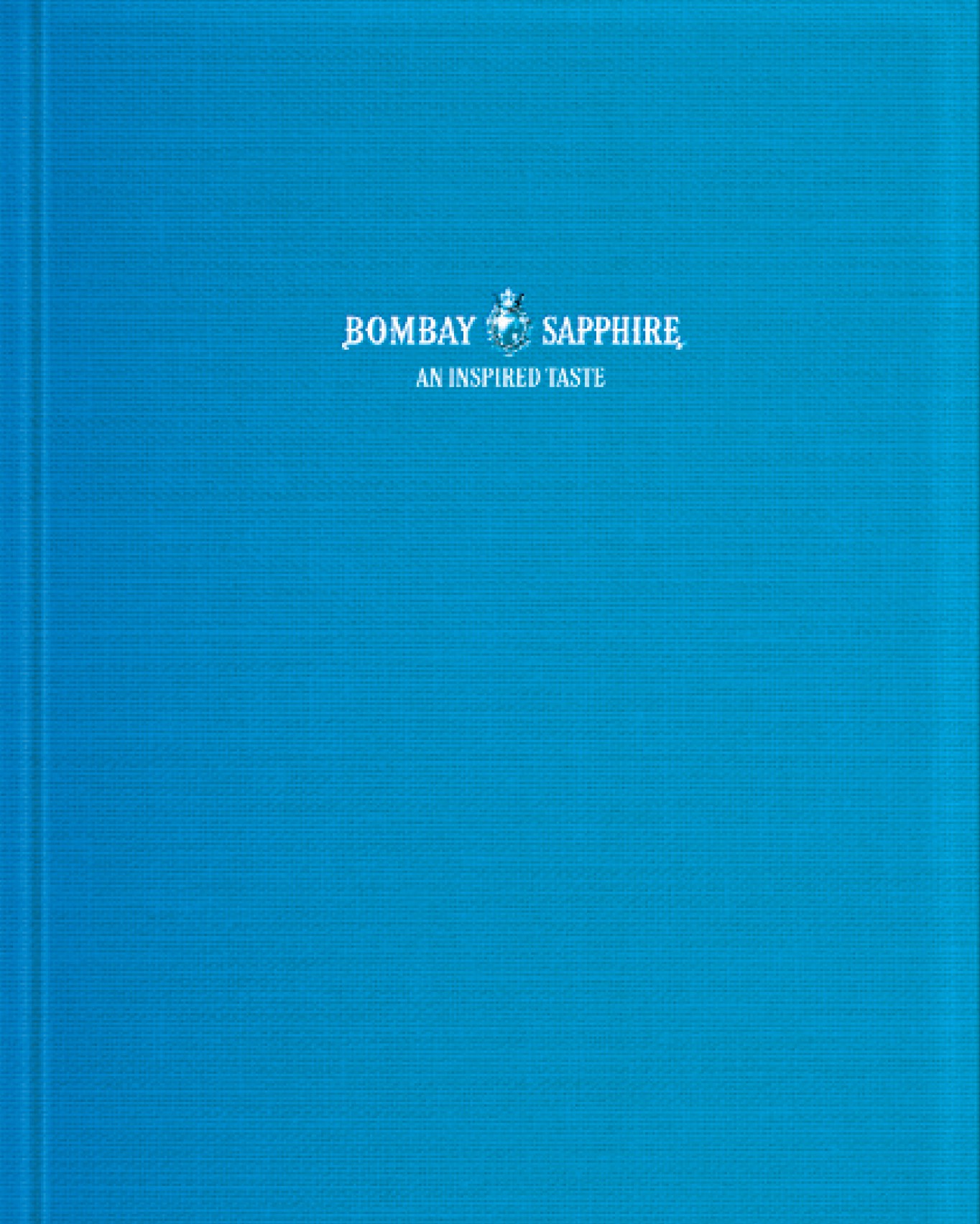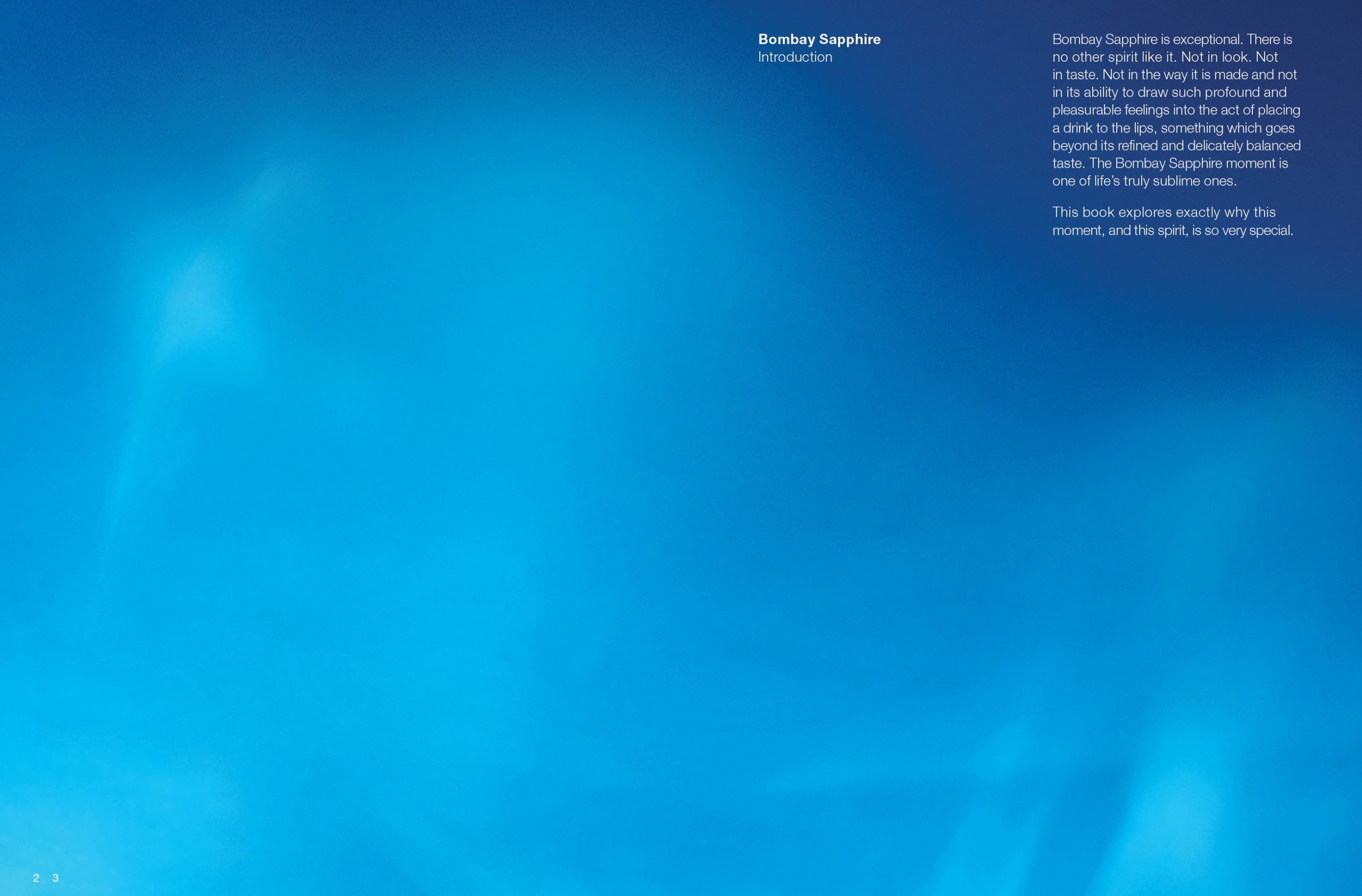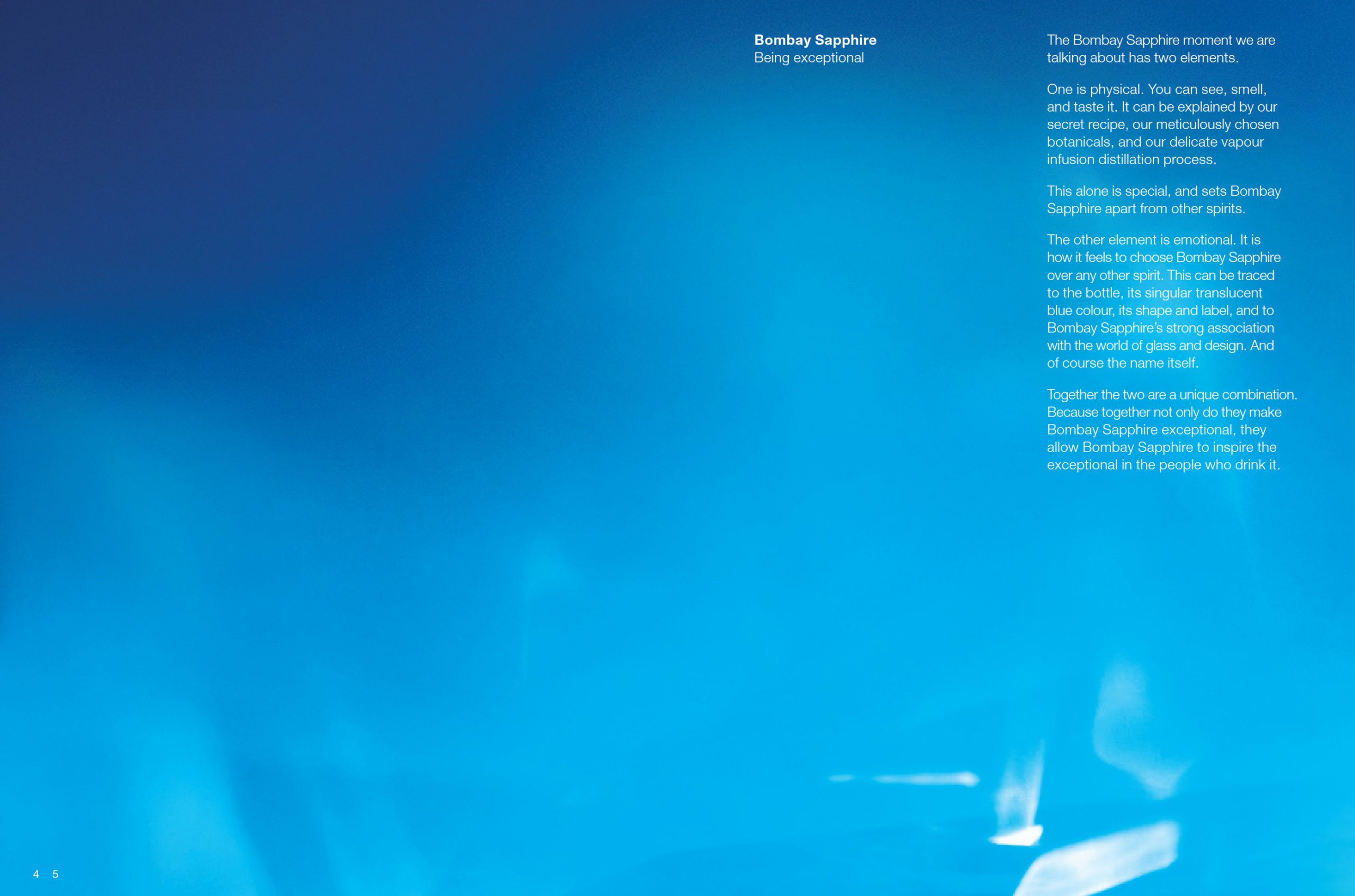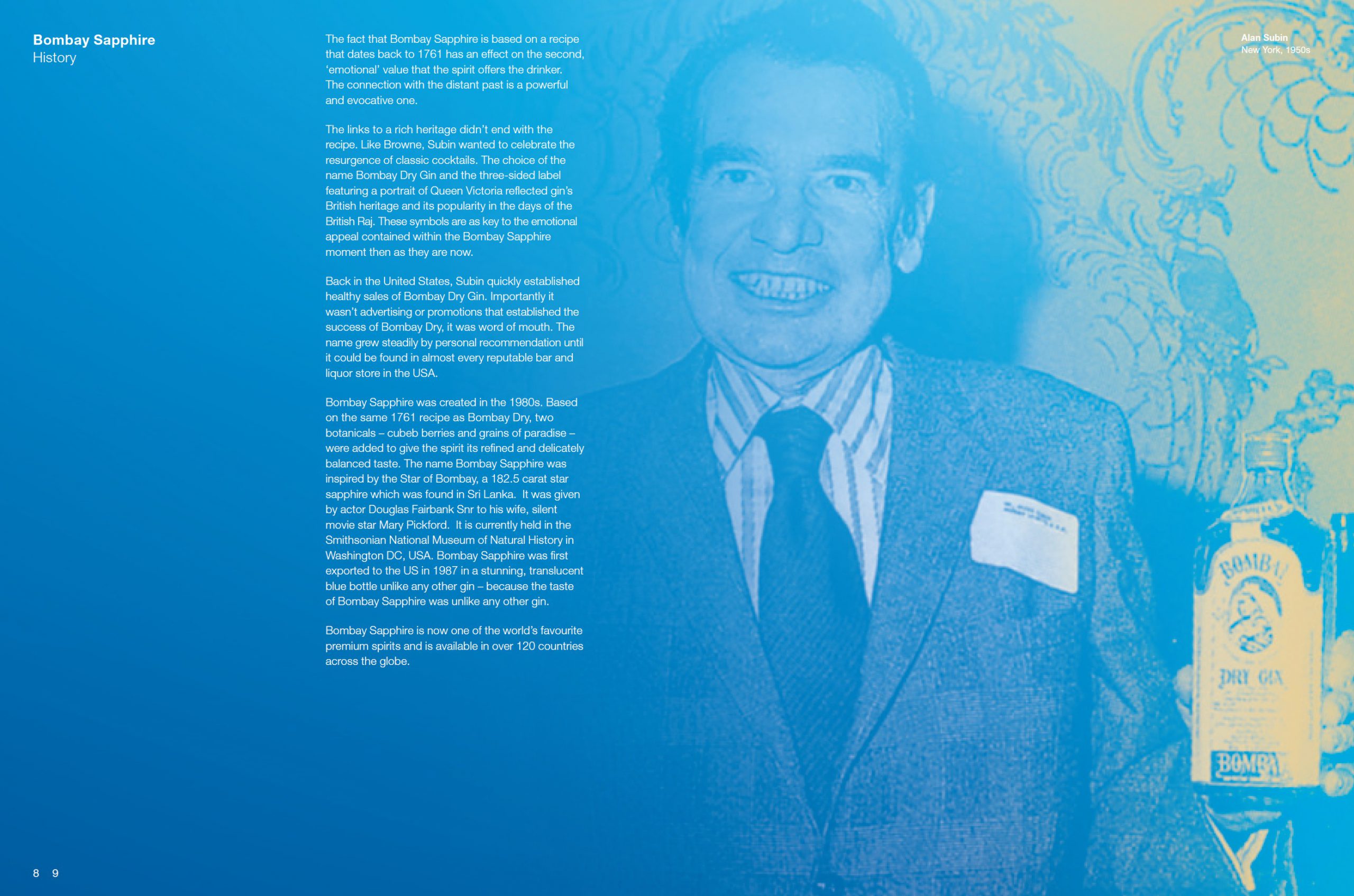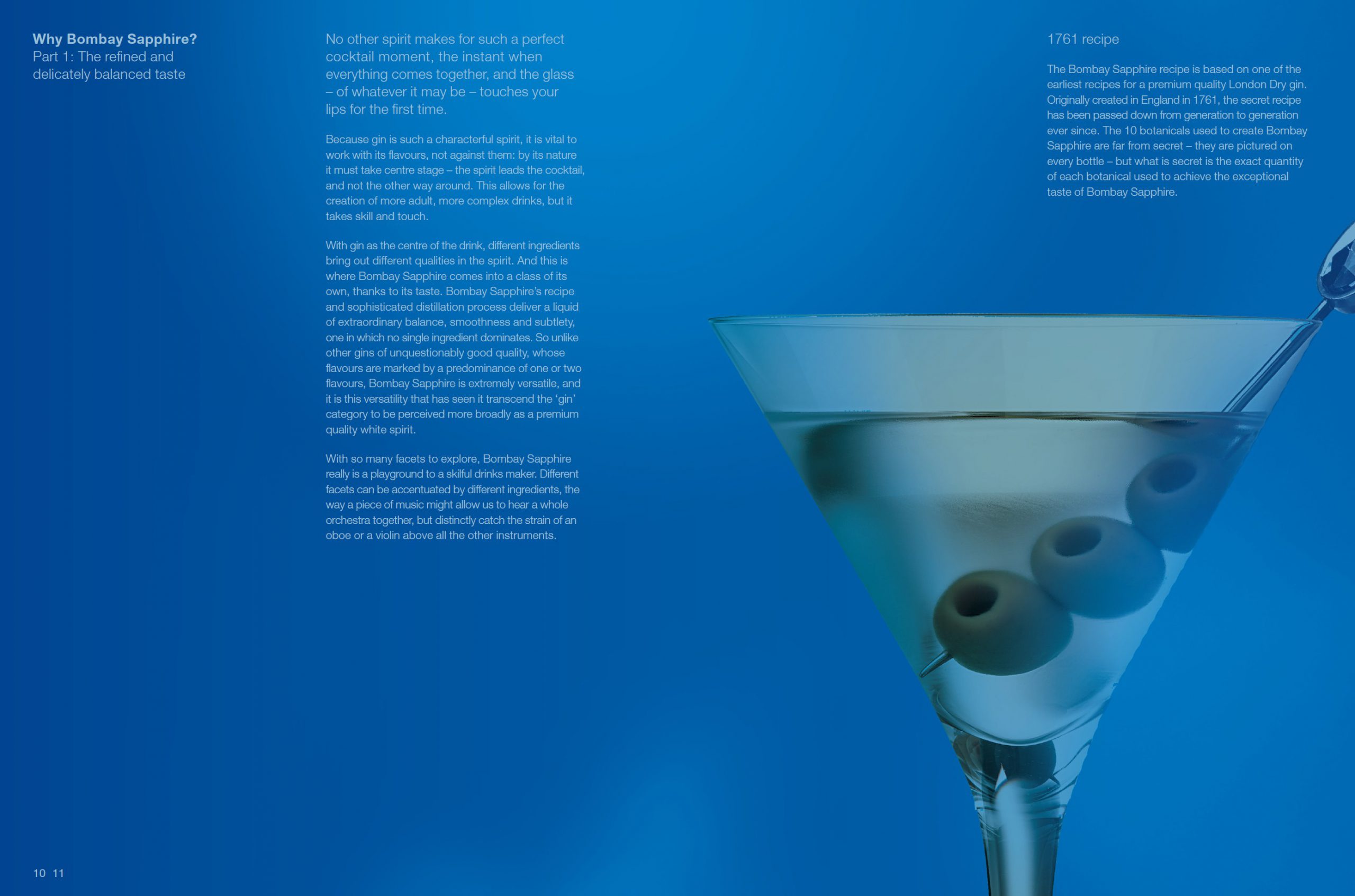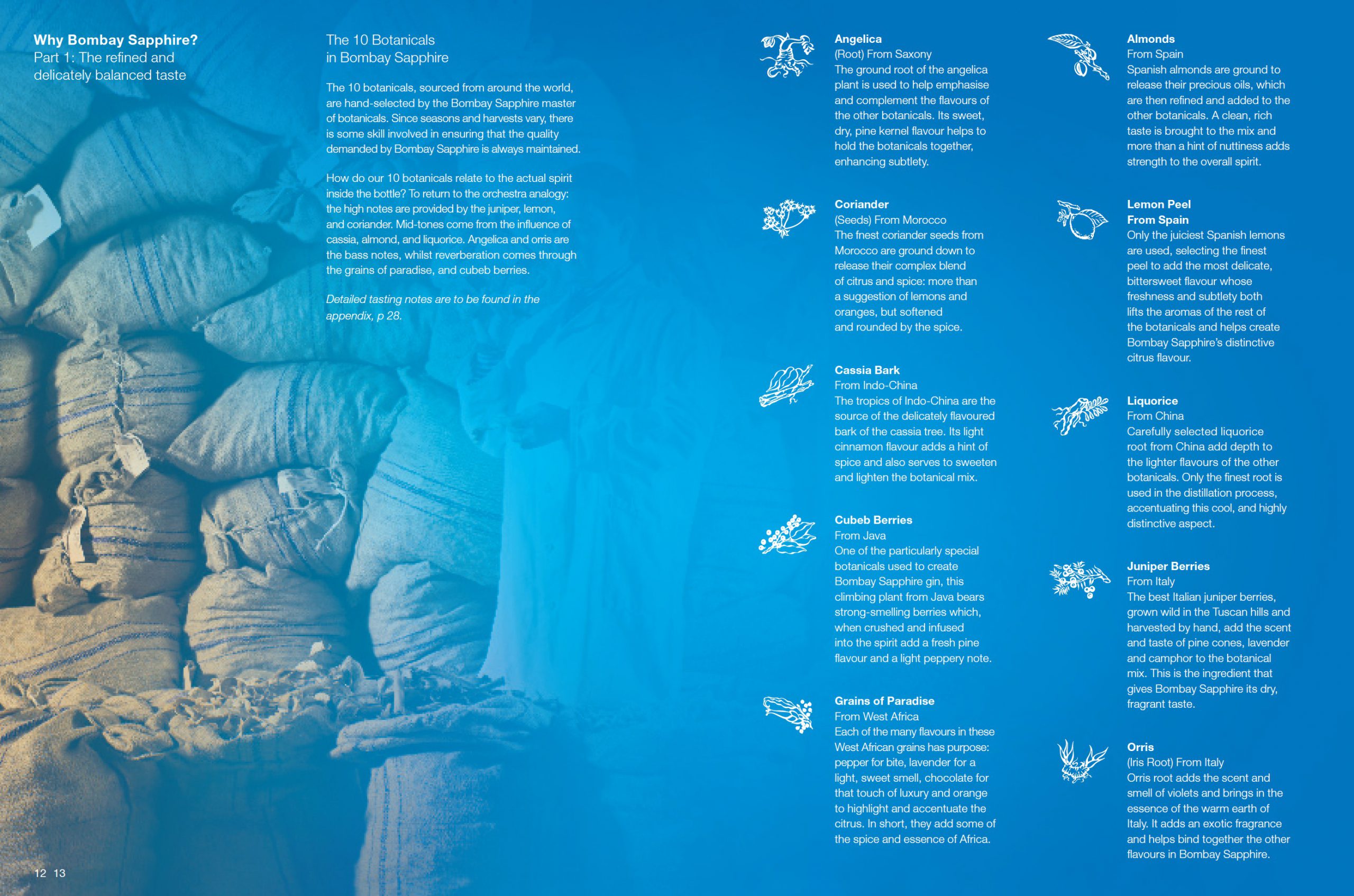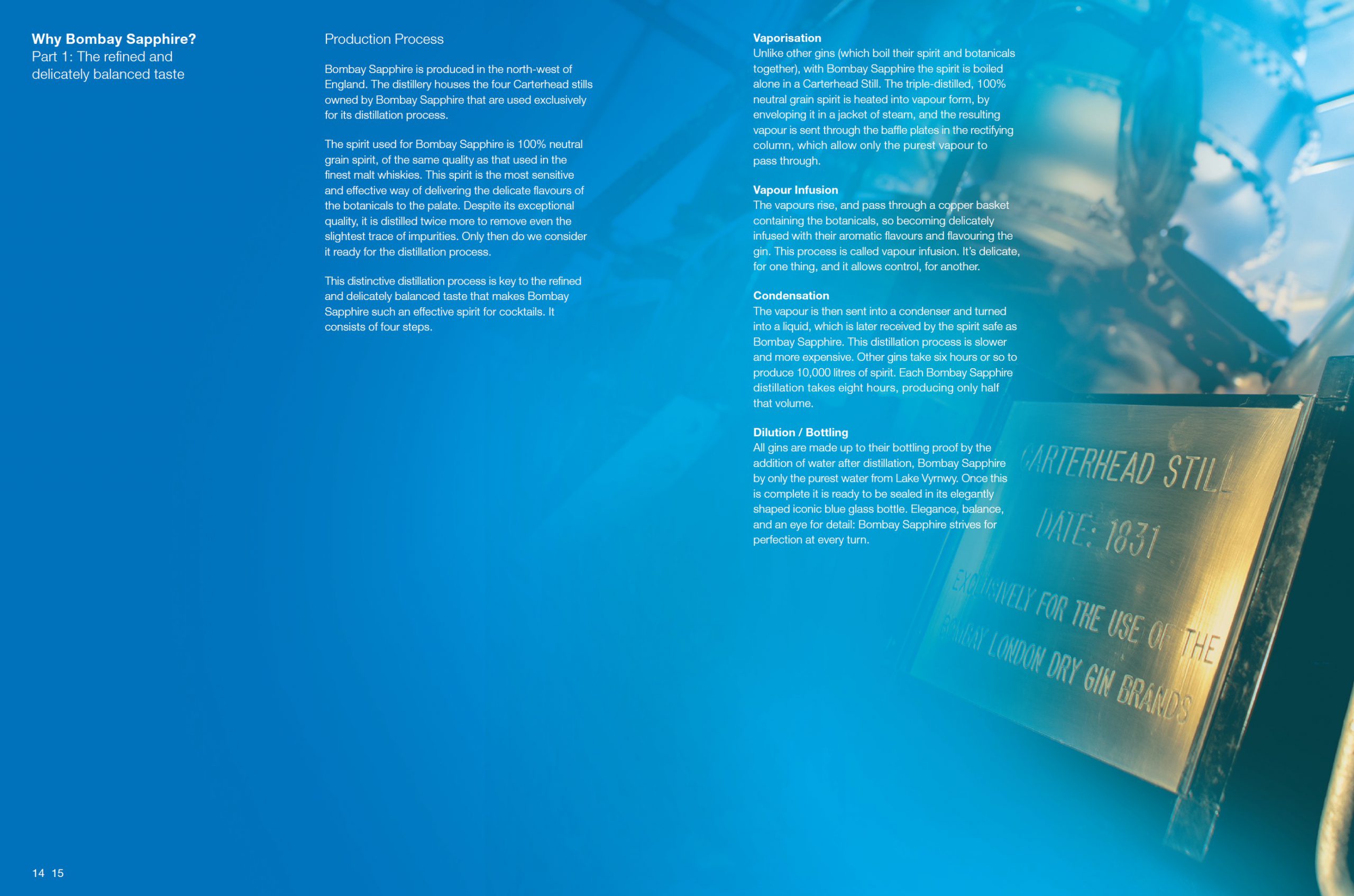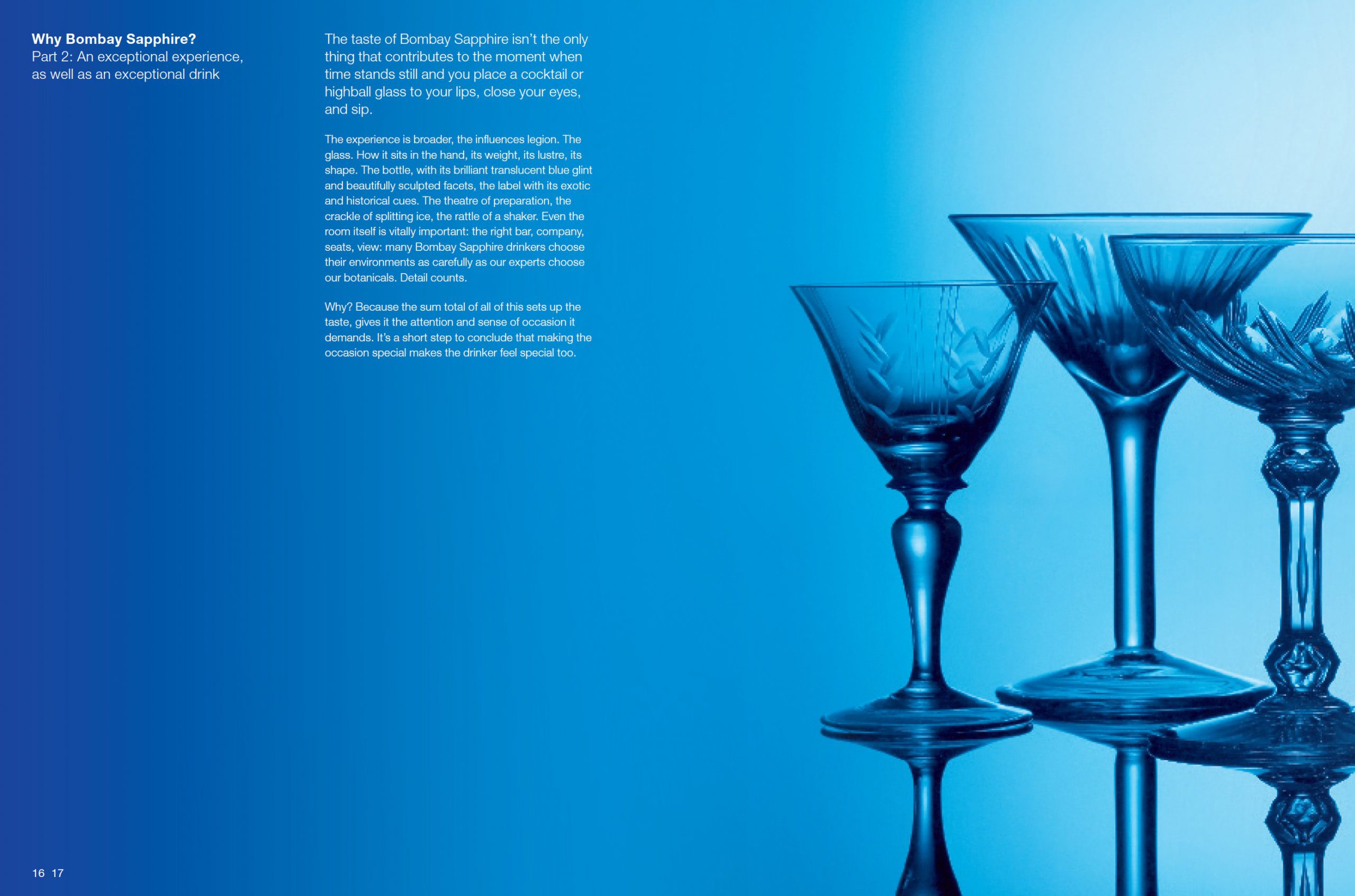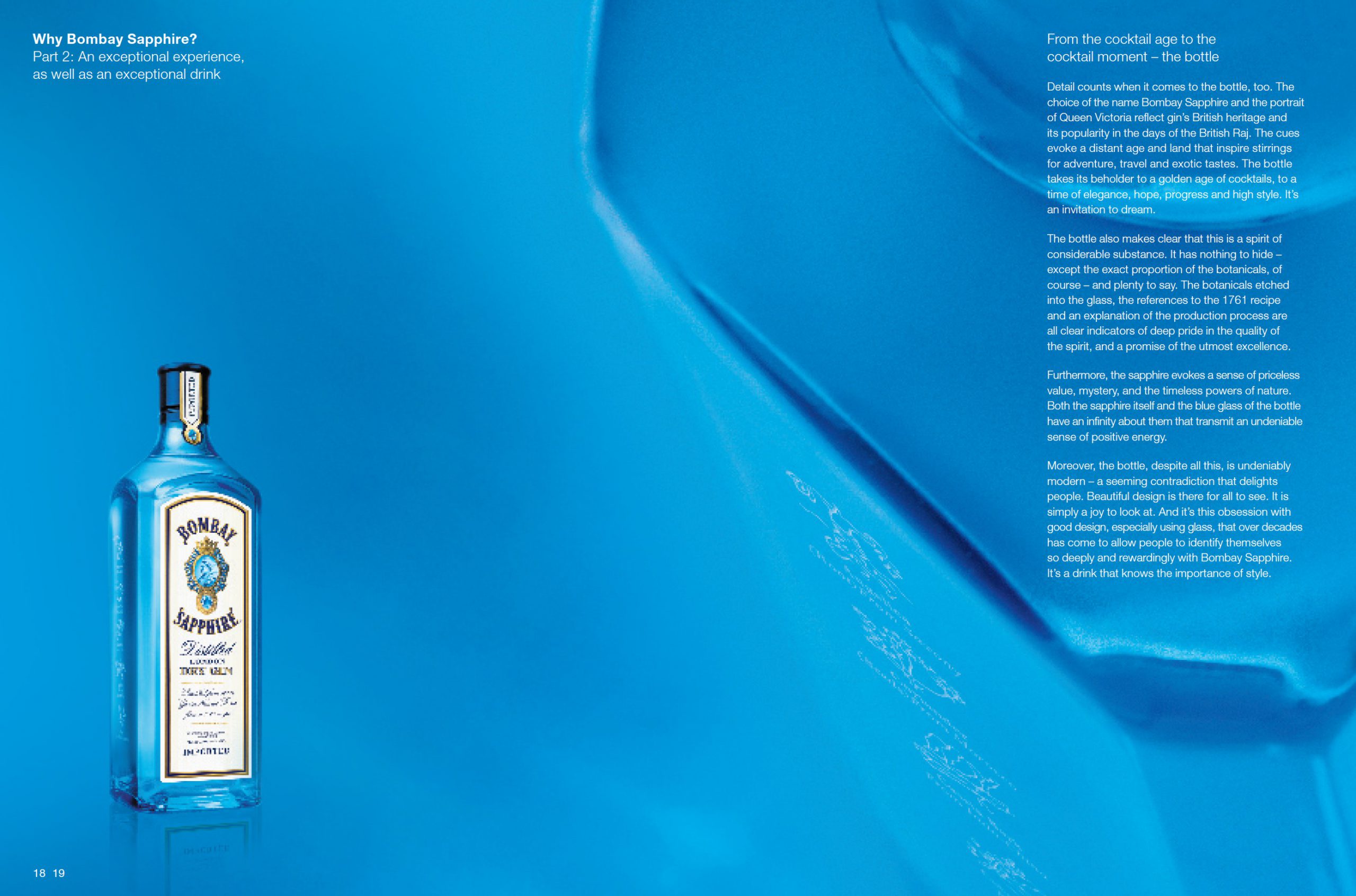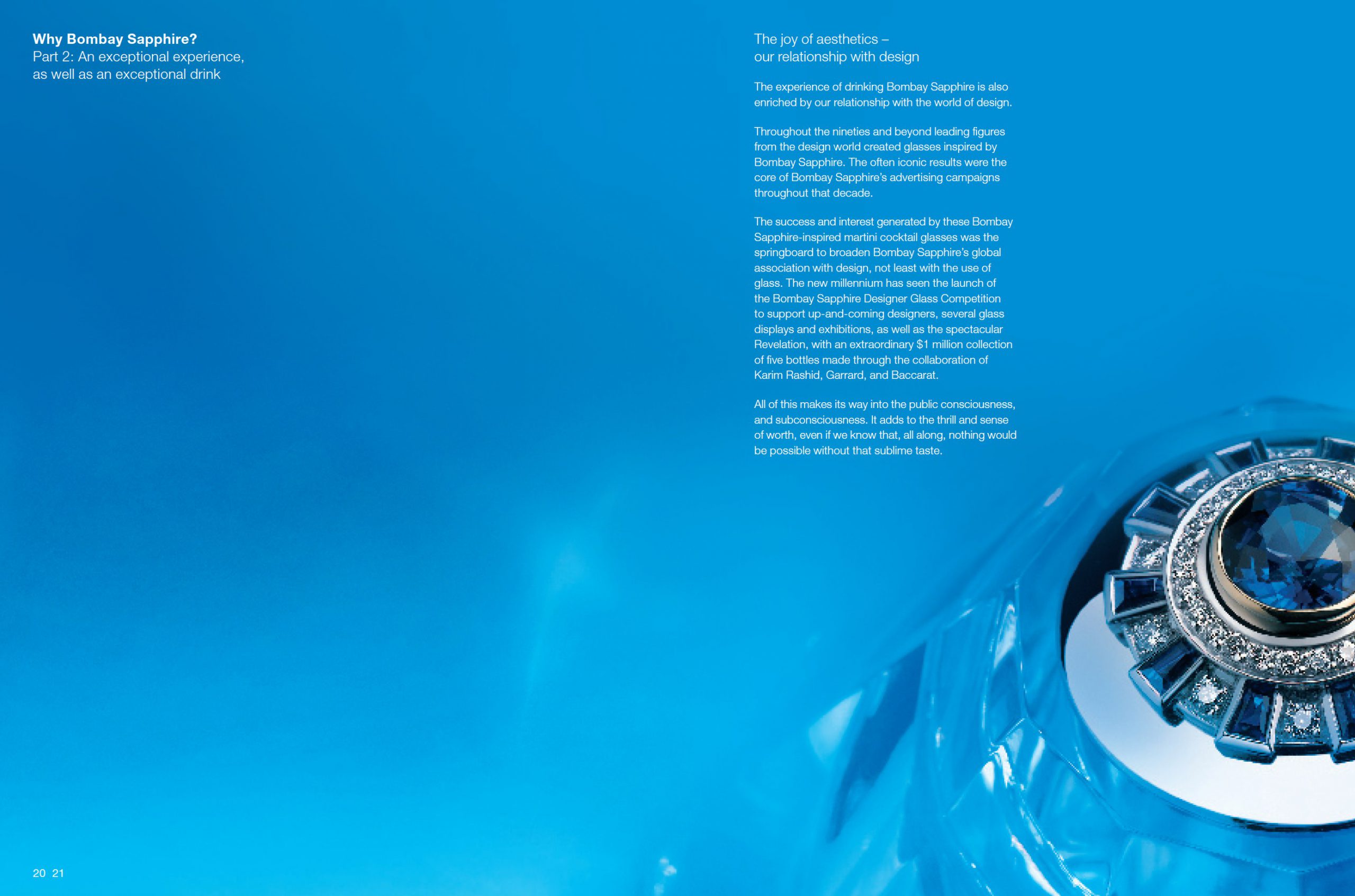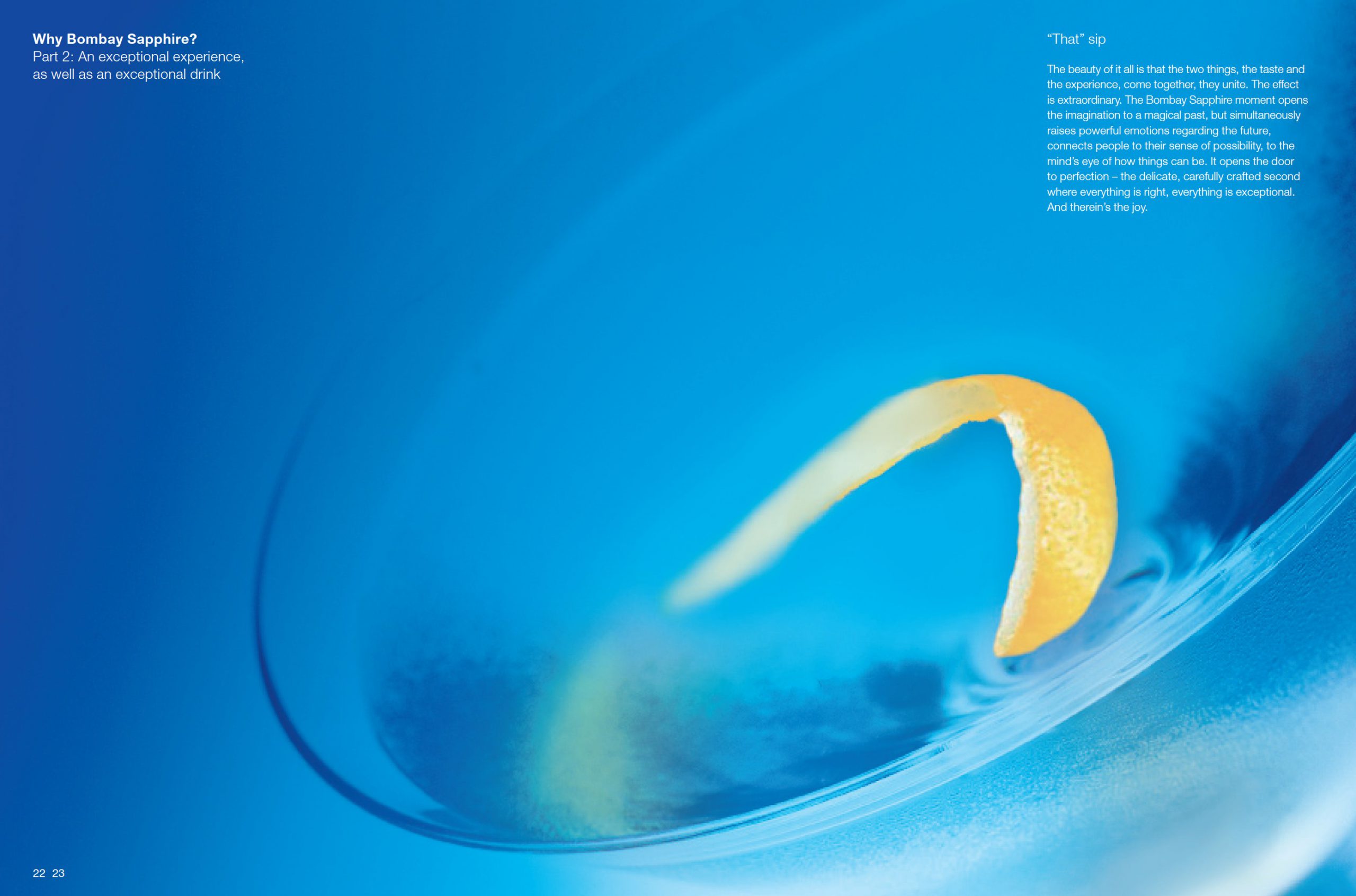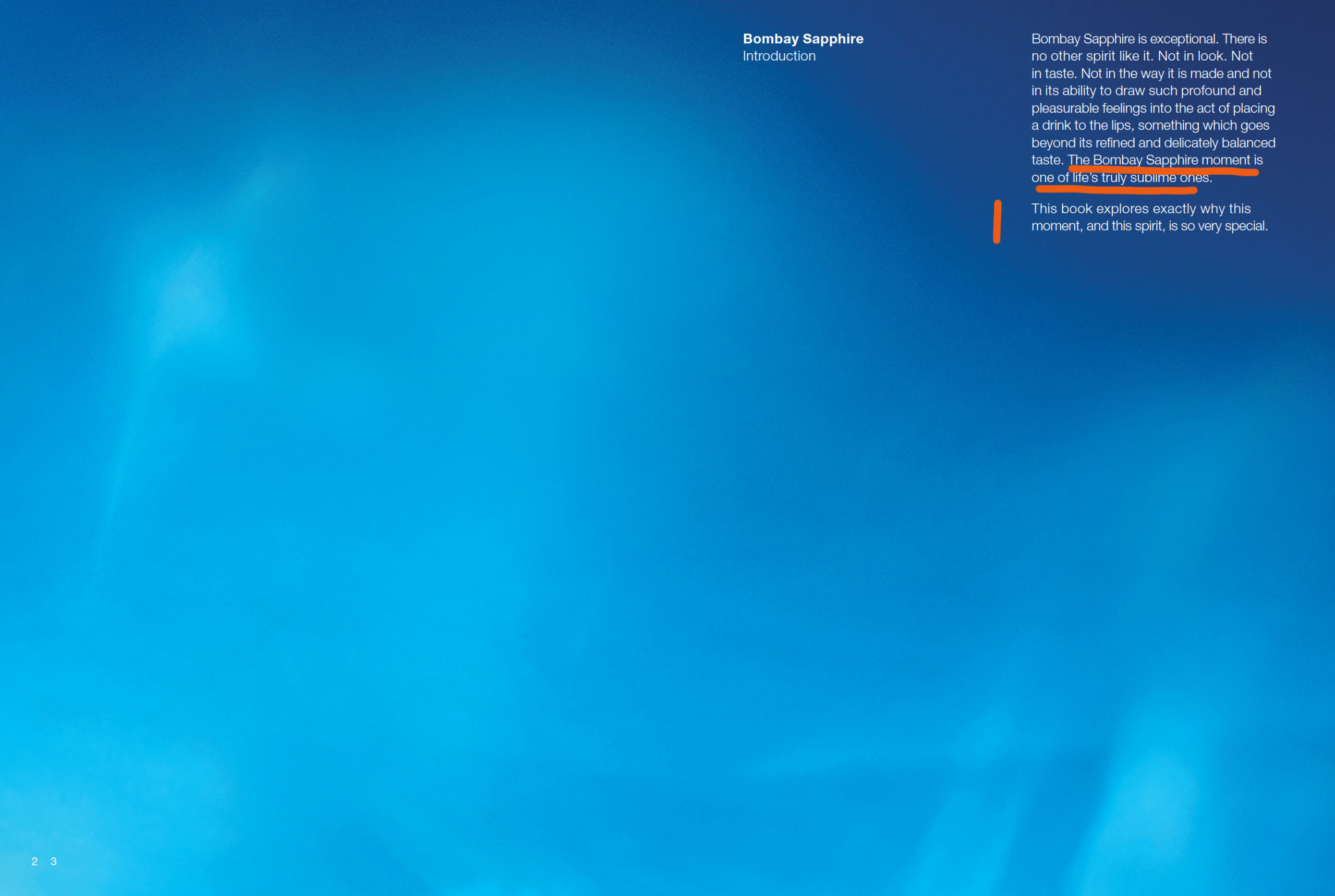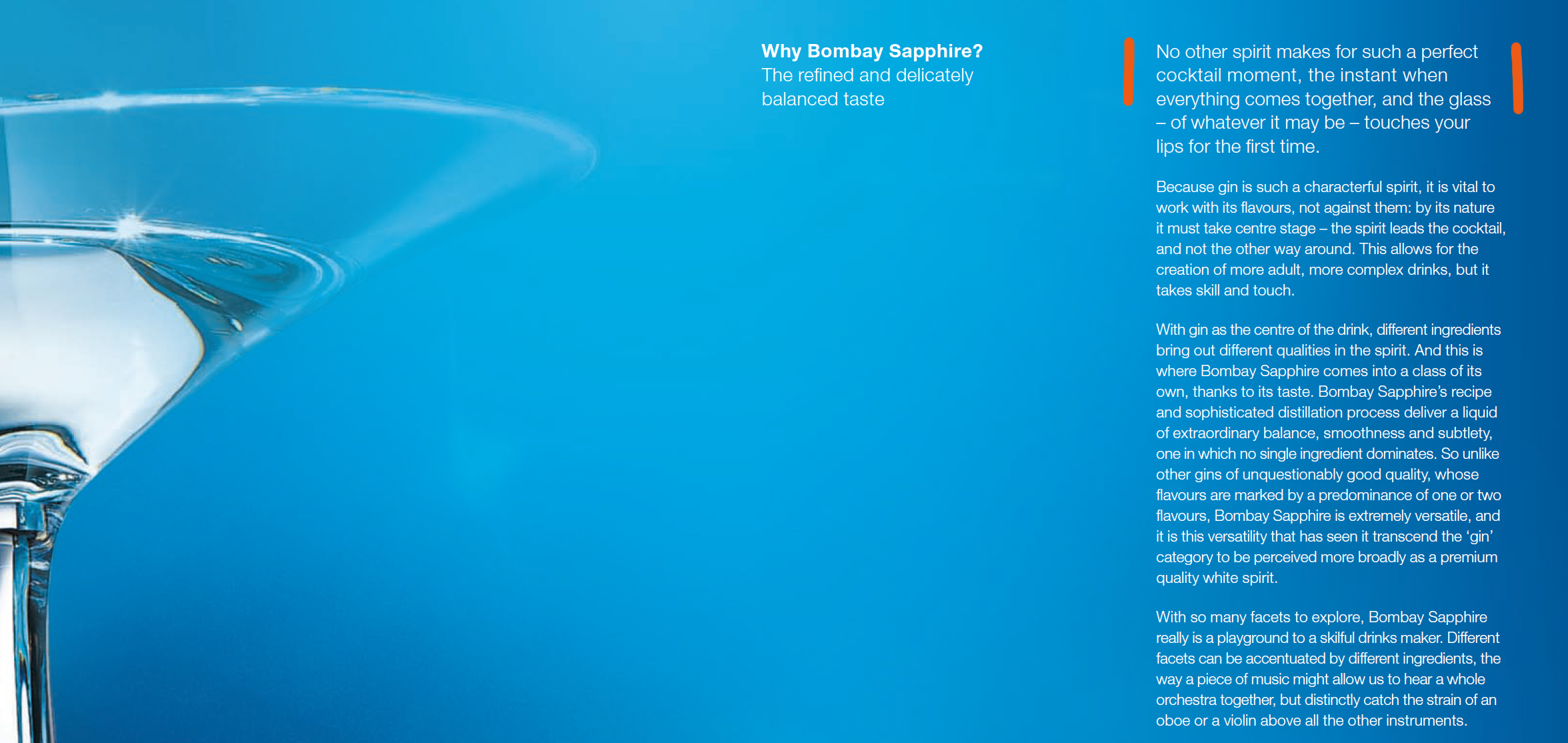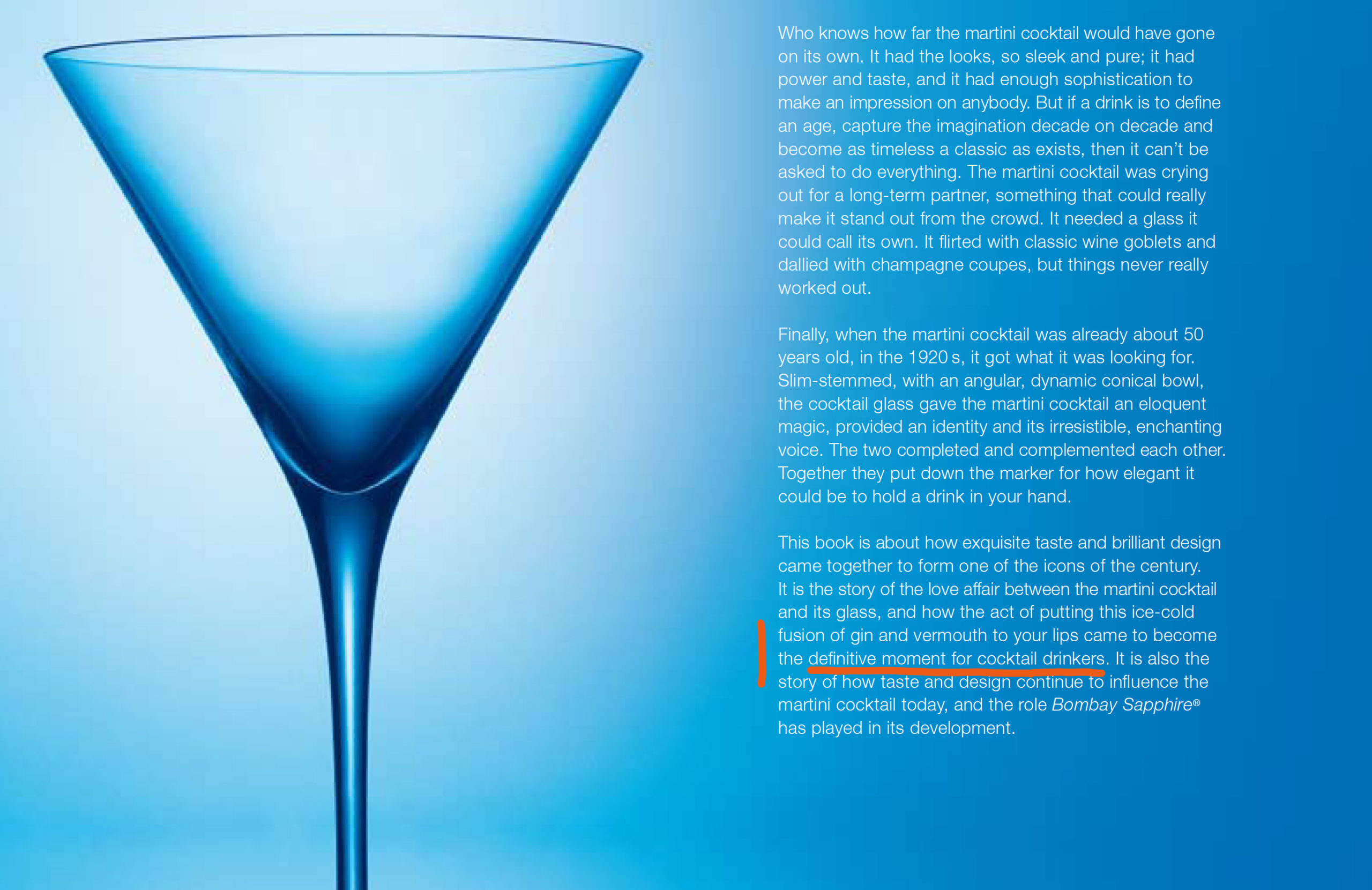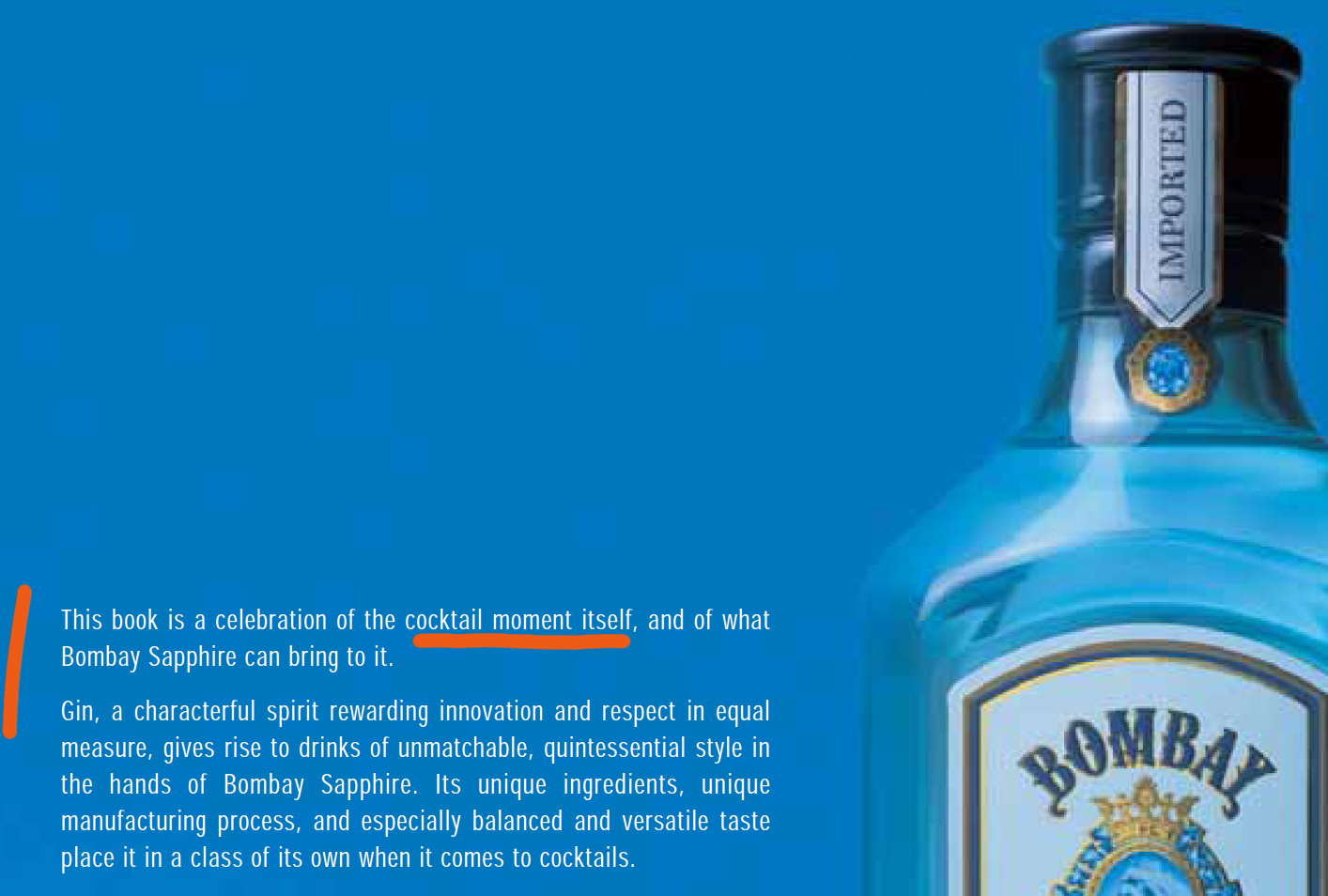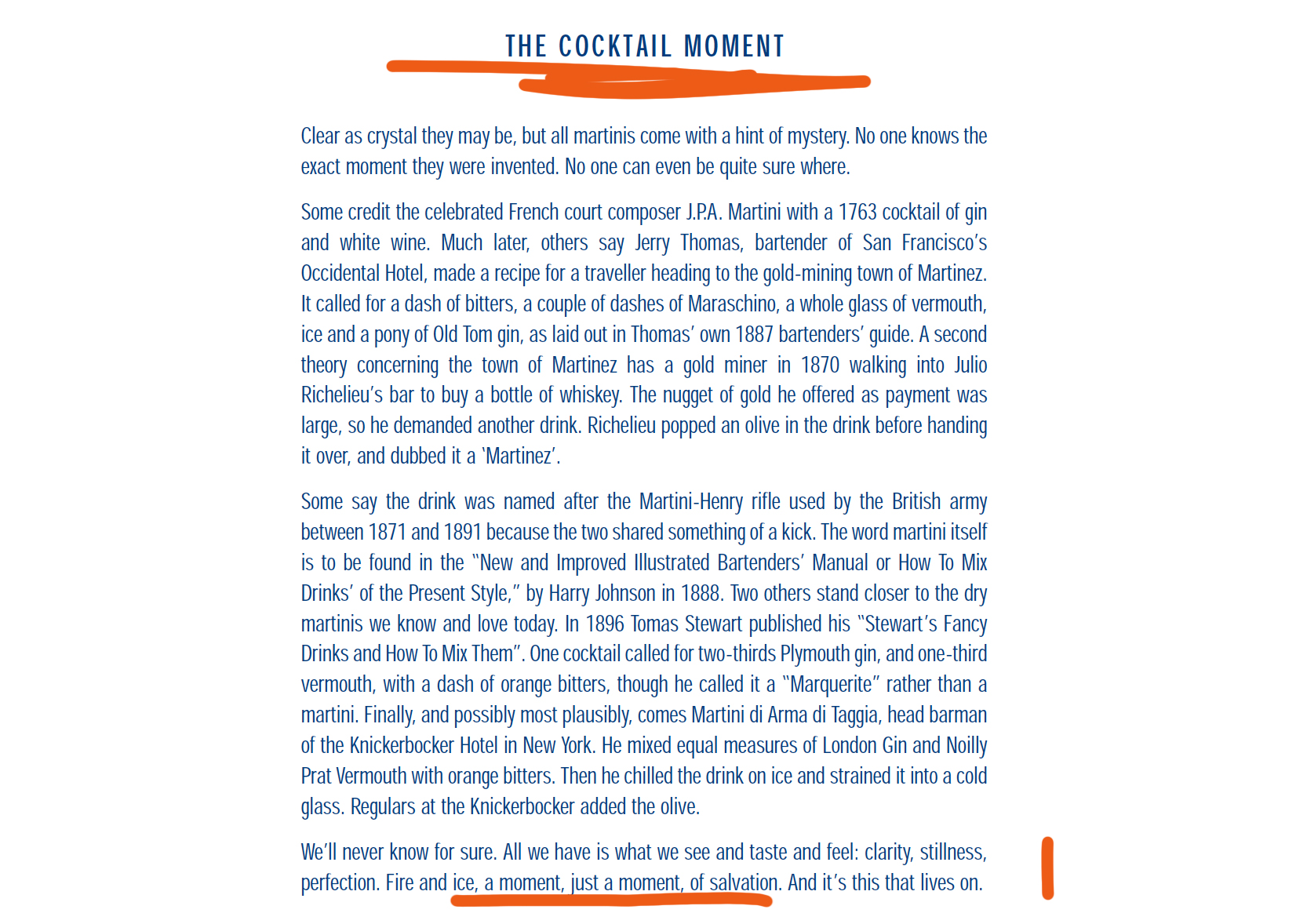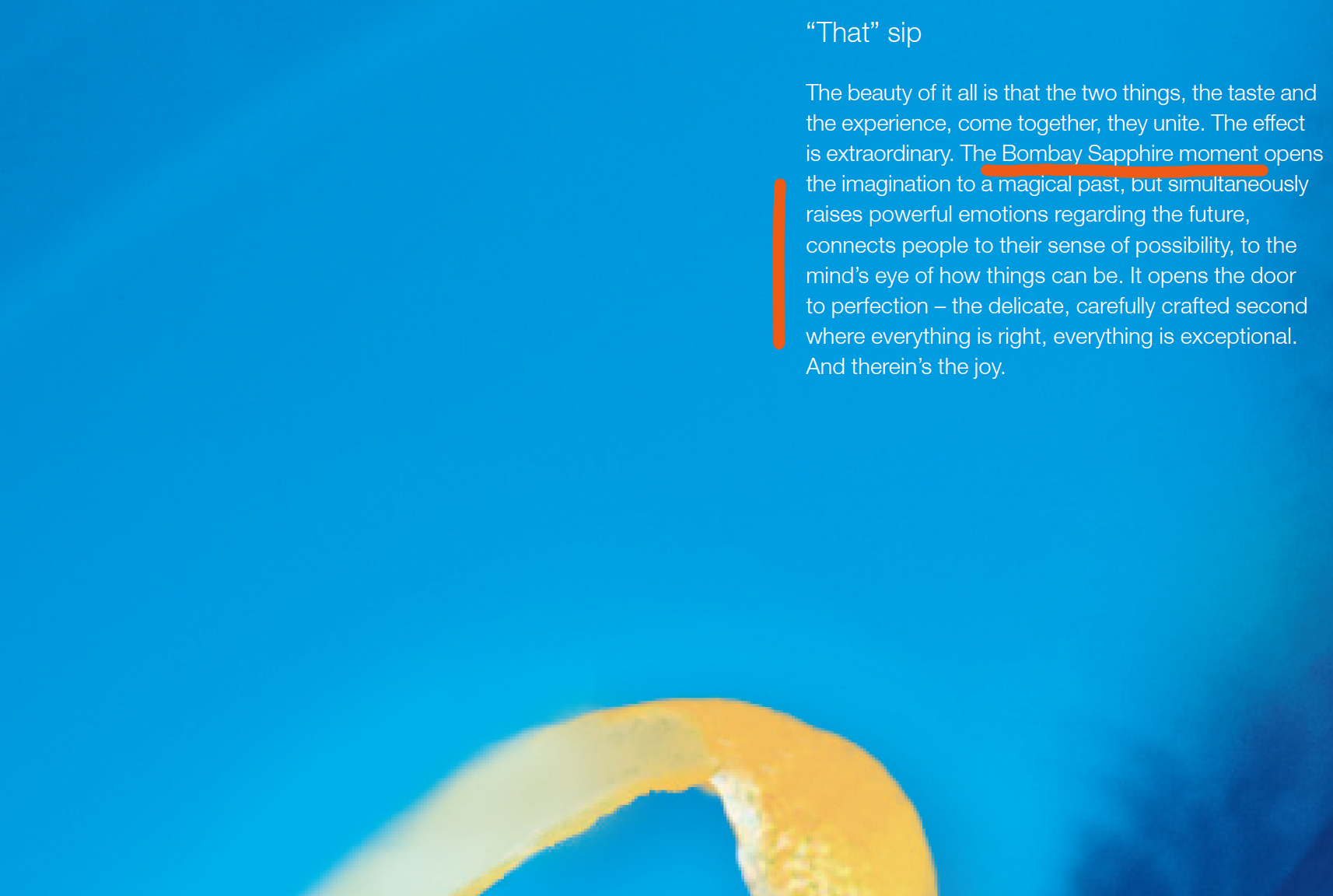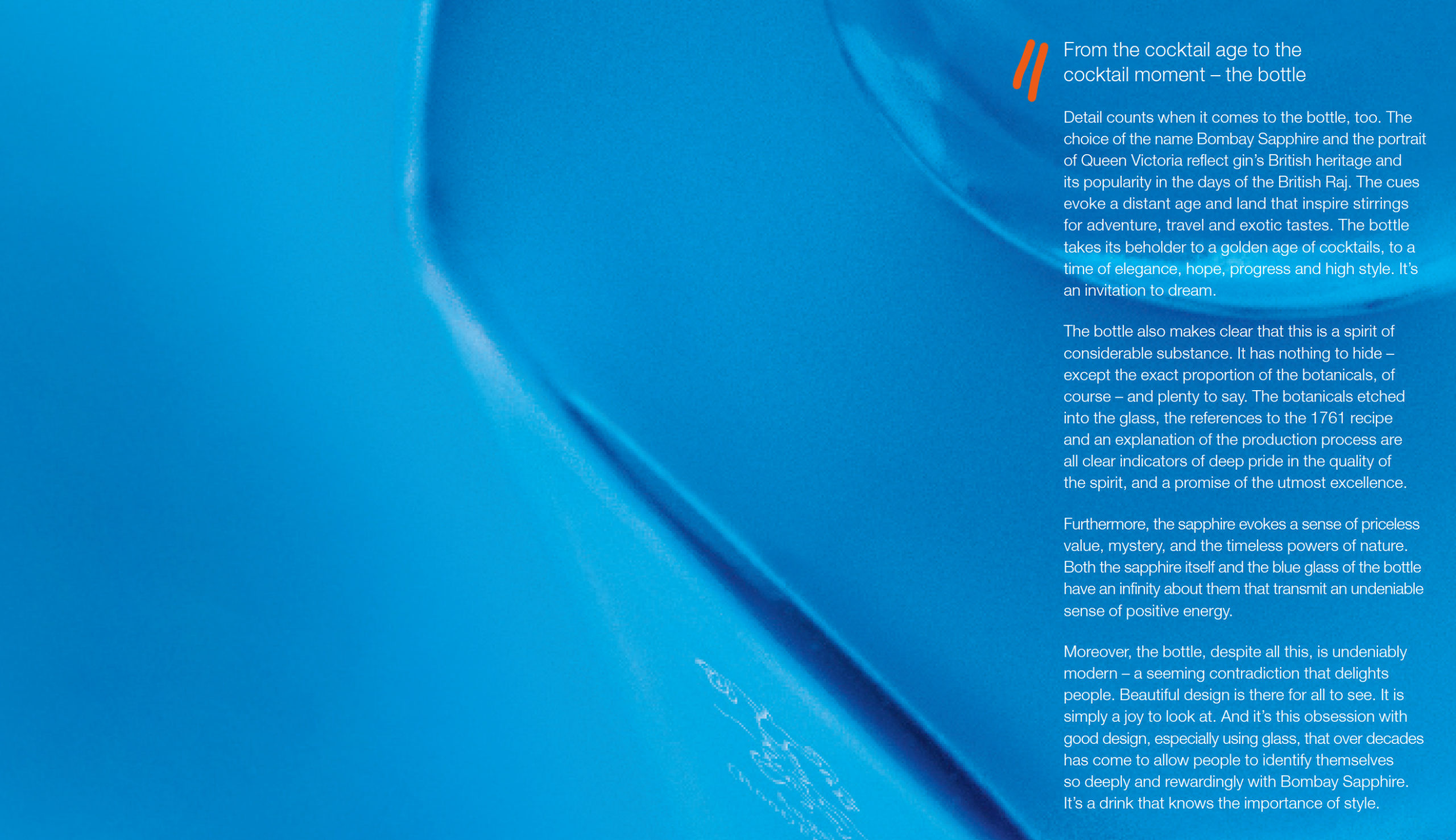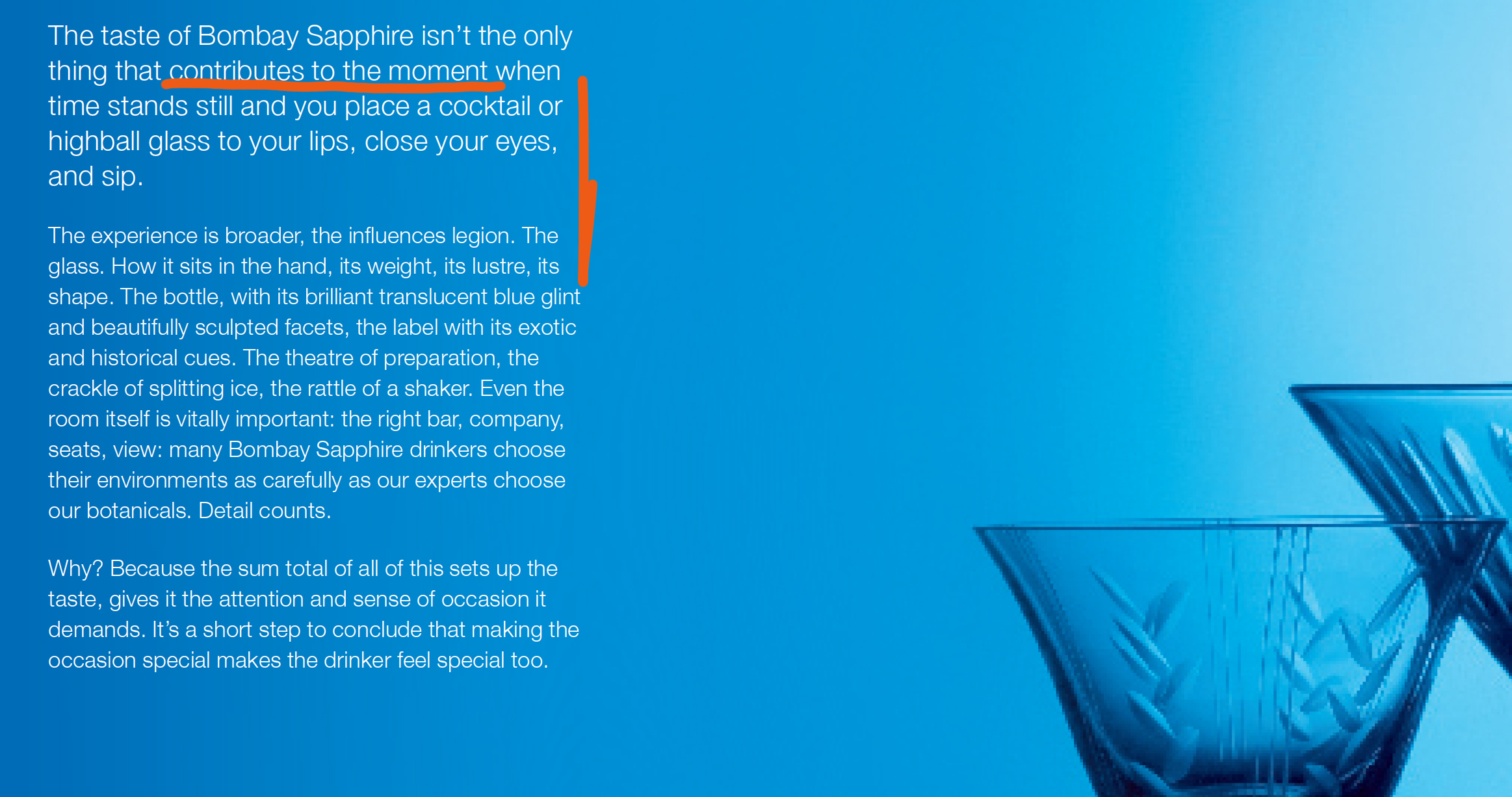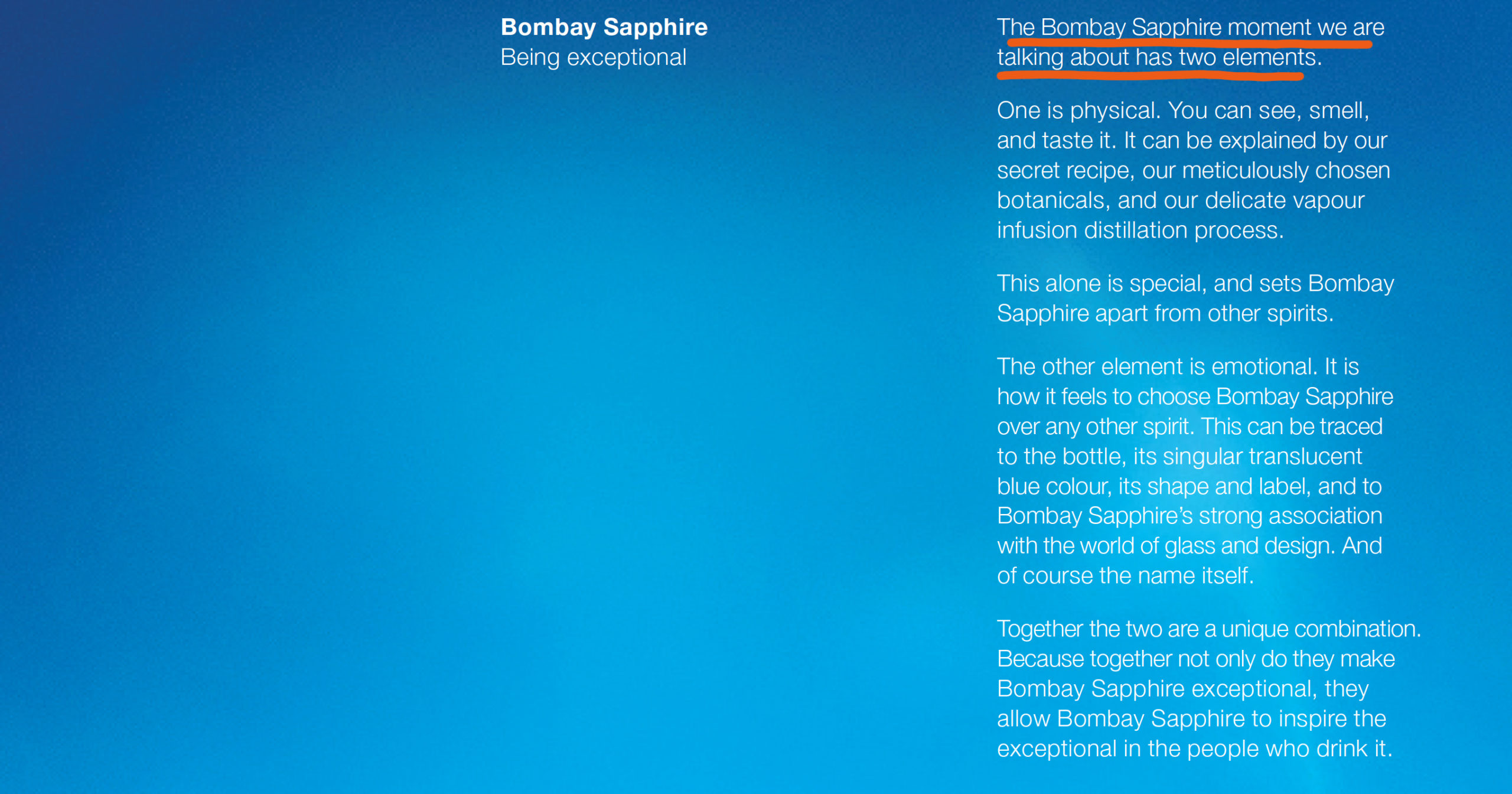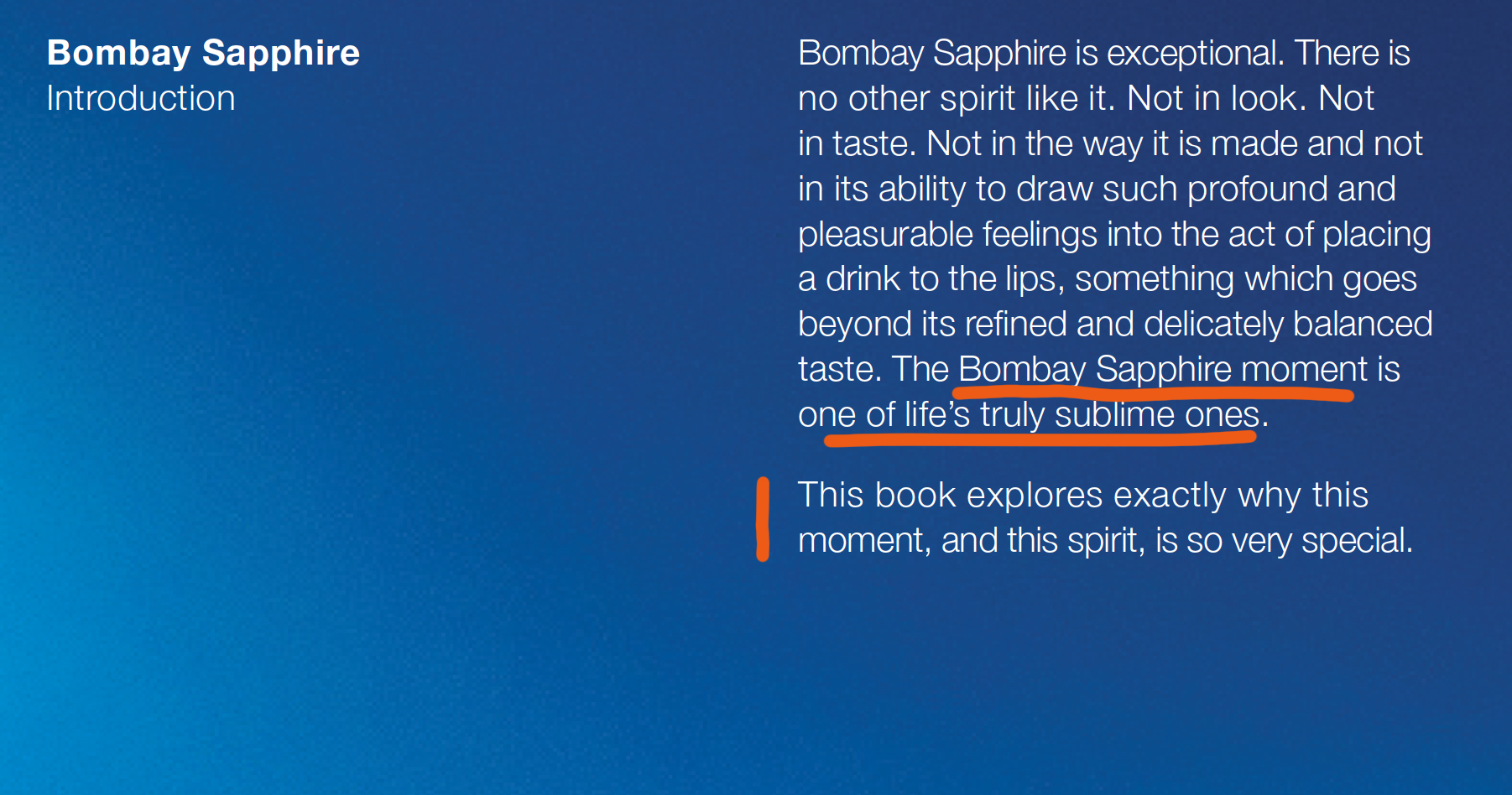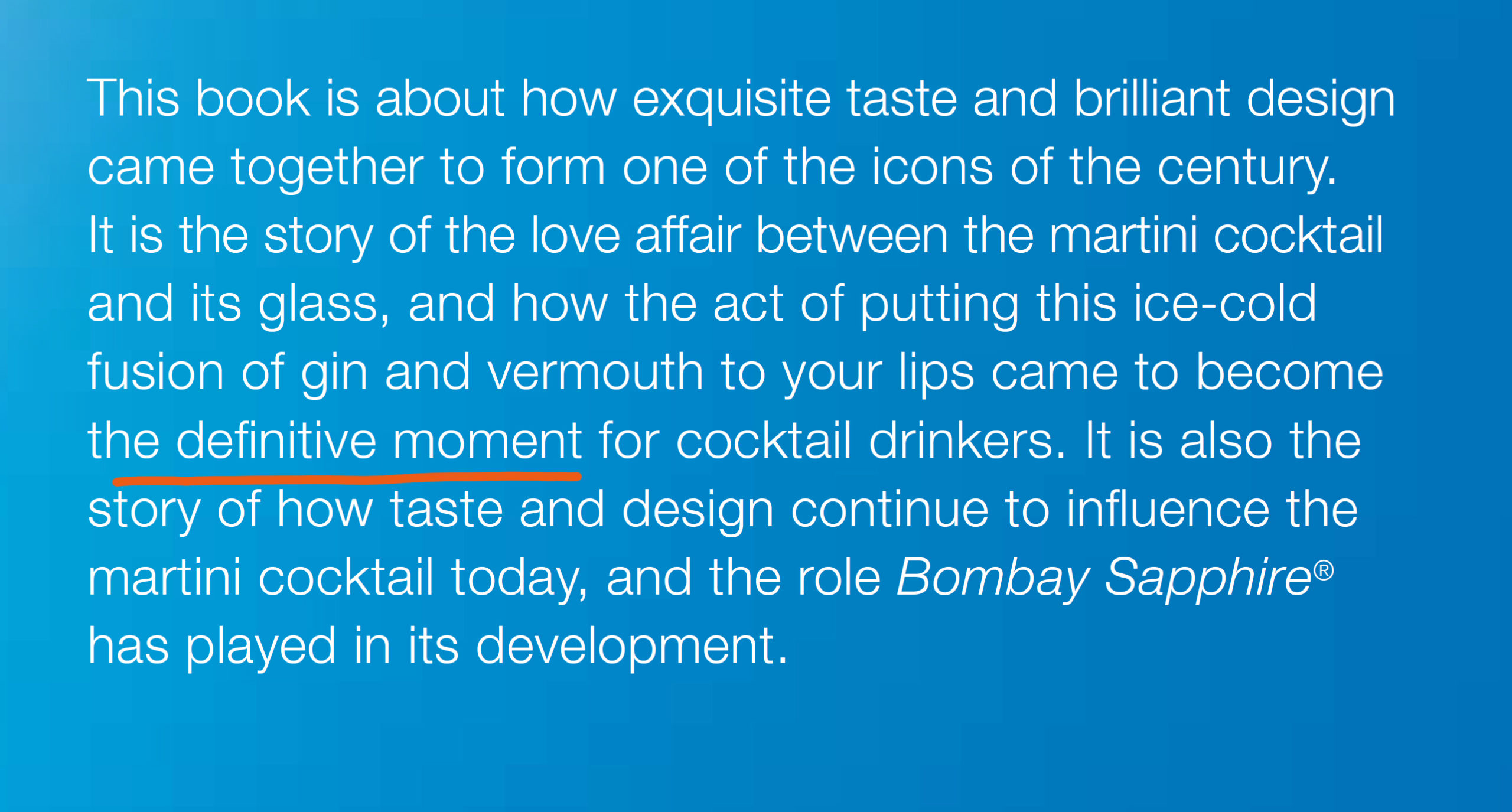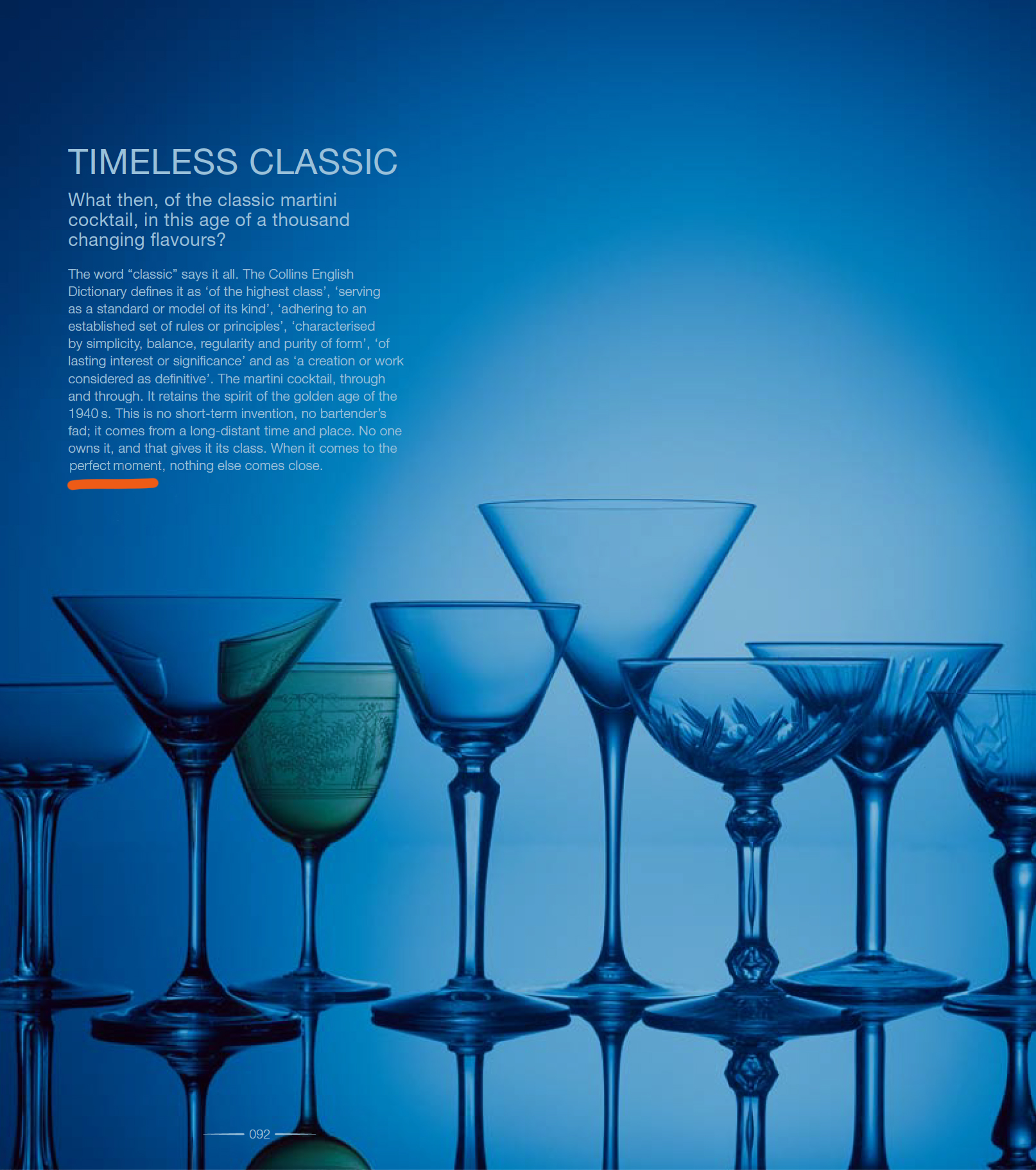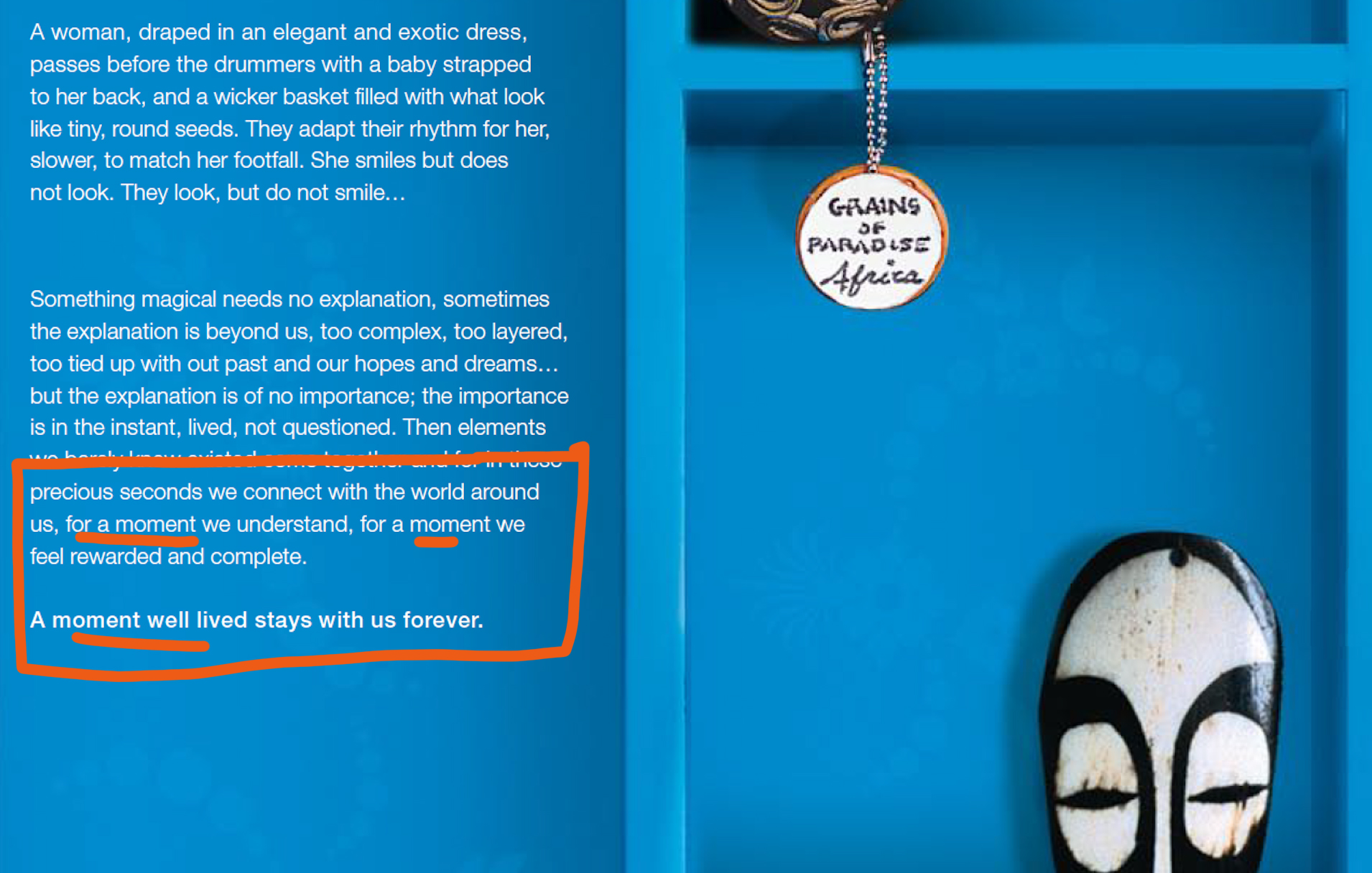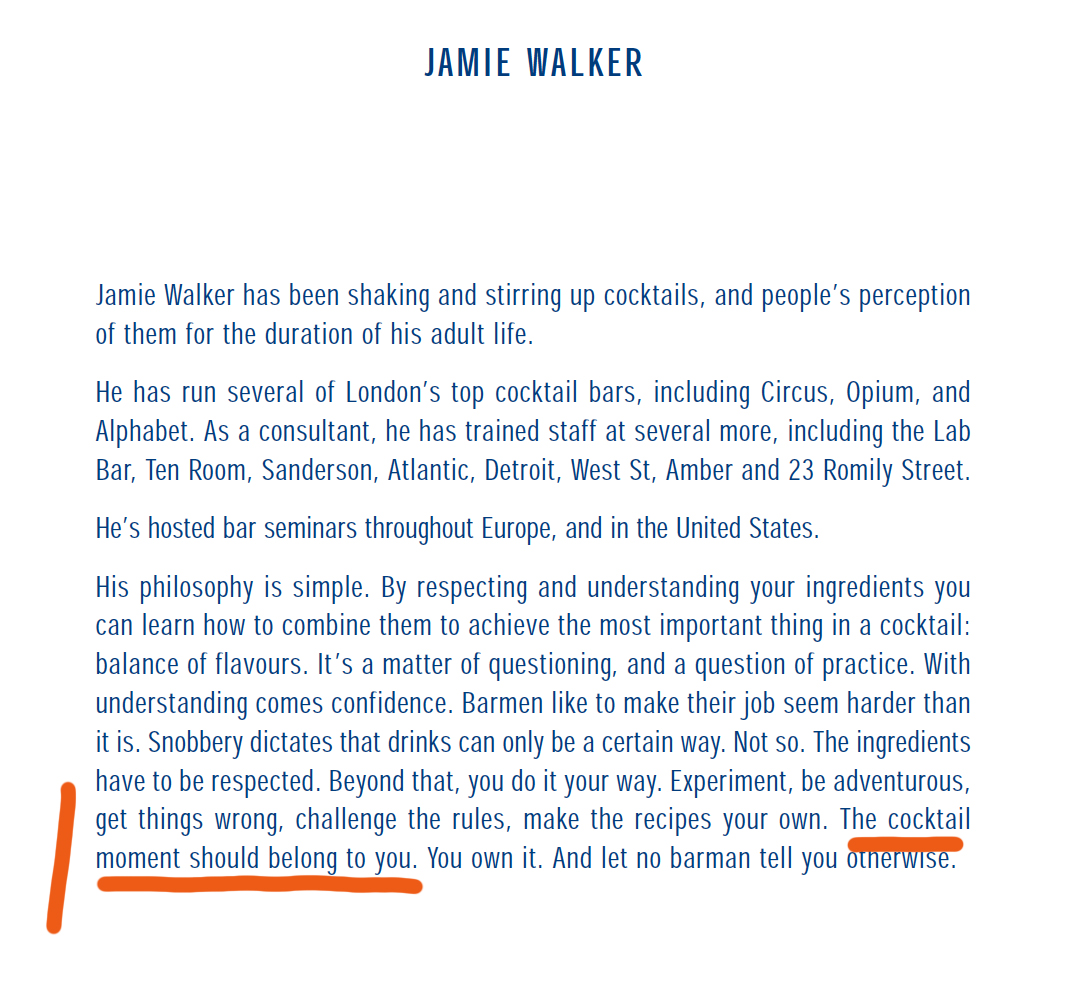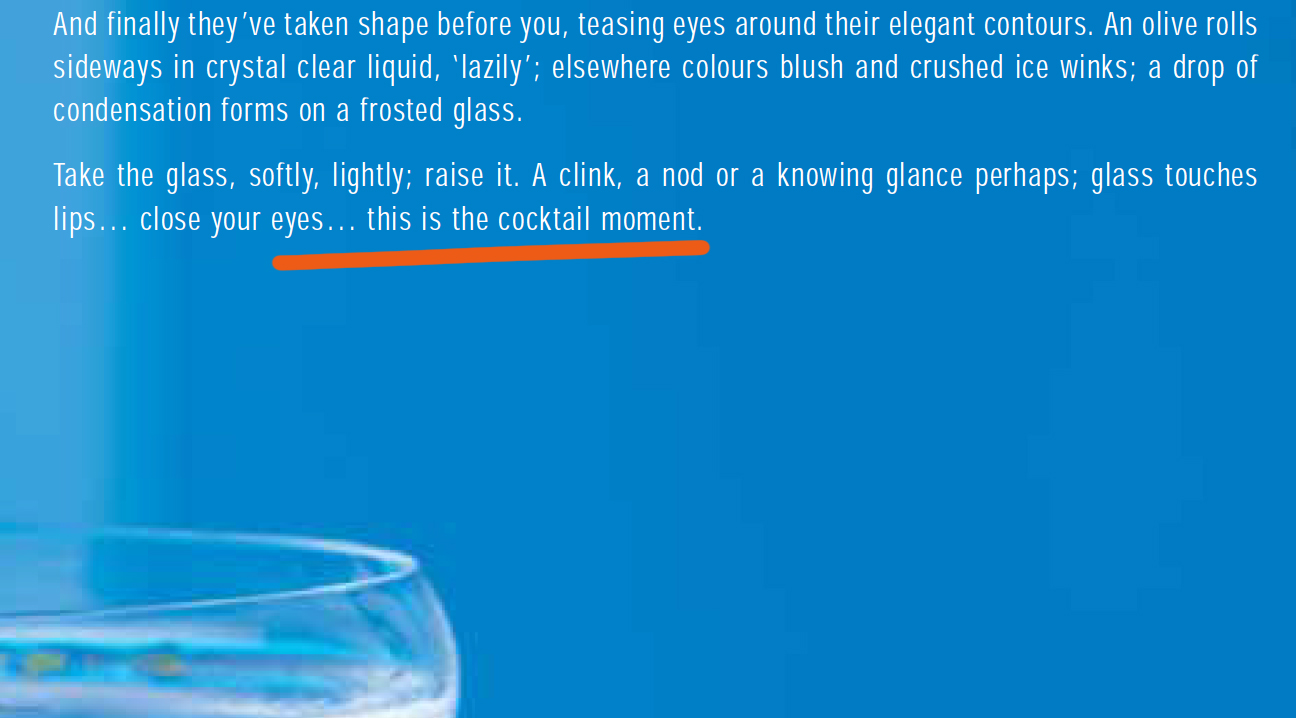The challenge
To be clear from the start, at no point has Bombay Sapphire ever been my direct client. But I did write for them for a decade, working as copywriter to Jonathan Davis, and this is all about how words shape strategy.
Jonathan began working with Bombay Sapphire in 1991, seven years before it was acquired by Bacardi, at a time when its annual global sales were about 115,000 9-litre cases. In a 25-year relationship he came to know that brand better than the people who owned it. He redesigned the original bottle, producing the artwork we all take for granted today. He created events, researched and catalogued the brand’s history (producing an extraordinarily thorough archive for them) and was proactive in suggesting and then executing numerous promotions and campaigns which were highly strategic in nature. For me it was a privilege to learn by being involved in the evolution of this brand. Over many, many projects we discussed the verbal elements, the themes, the storytelling. Style, taste, design, the drive for market share in cocktails: these were all themes that constantly resurfaced.
What we did
I wrote many thousands of words for Bombay Sapphire, but my contribution to the underlying strategy can be boiled down to just three of them: “the cocktail moment”.
It wasn’t an overt strapline, it didn’t lead an advertising campaign, but it was there, all the same, binding elements of the brand together across a number of communications. The idea was simple: that the world stopped with a cocktail. Sensation took over. You gave yourself over fully to the moment in time in a way you rarely do elsewhere. All the senses. Taste, obviously. Sight, touch… design was big for Bombay Sapphire, whether it was the bar and setting or the glass you were holding (Bombay Sapphire had a long association with glass design). The nose, the subtle interplay of botanical ingredients with mixers, the back-history of the drink, the provenance of the ingredients, the distillation process. The idea allowed us to tie many complex elements of the brand to a simple, easily relatable and positively emotionally charged point in time. We started with the cocktail age… then the cocktail hour… but the ultimate thing to “own”, if you can forgive such a word, was the moment.
The gallery below has, firstly, a piece I wrote called ‘Manifesto’ – the story of the brand in a nutshell, ten pages or so to show people the ethos of what they were working with, its essence unwrapped and explained. The cocktail moment is integral to it. Afterwards I’ve added a string of places where that phrase cropped up, marked up in orange.
What happened next
Because, perfectly deliberately, we made it crop up. A book on the history of the cocktail glass and the martini given away all round the world in duty-free stores; booklets exploring the background of the botanicals; a cocktail book exploring new recipes and new bars… these journeys could always be bought back to the cocktail moment… more focused, more precise, more perfect than the cocktail hour.
You could be forgiven for thinking that Bombay has been left for dead by the tidal wave of beautifully designed boutique gins that have come on the market. When once it was THE premium gin, now it’s no longer even kept on the same shelf. But look again. For all the Bulldogs and Hendricks, Bombay Sapphire’s sales are still rising. It’s still the second biggest selling gin on the planet, according to ‘The Spirits Business.com’. 4.7 million 9-litre cases in 2019. Only Gordon’s shift more.
